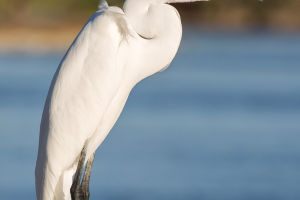Hummingbirds are known as the smallest birds in the world, roughly the size of a bee. Their body length ranges from 6-12 cm, and their weight is mostly 2.5-6.5 grams. The wings of this bird vibrate very fast, producing a "humming" sound when flying, which is similar to that of a bee, hence the name "hummingbird."
Hummingbirds are a large family, with a total of about 320 species. Among them, the bee hummingbird produced in Cuba is the smallest, weighing less than 2 grams and measuring only 5 cm long, while the largest giant hummingbird weighs about 20 grams.
The feathers of hummingbirds are incredibly beautiful, reflecting iridescent luster that has different effects when viewed from different angles in the sun. Hummingbirds are famous for their unusual ability to fly.
As the only bird in the world that can fly backwards, hummingbirds have incredible coordination and balance skills, as well as a keen sense of whether there are obstacles behind them at all times.
Hummingbirds are able to rest, turn, and hover in mid-air. They hover in the air with the rapid flapping of their wings to drink nectar. They can take off and land vertically like a tiny helicopter, hovering in the air.
It's difficult to capture their speed in flight. Under normal conditions, hummingbirds can fly 42 kilometers per hour, and their speed during courtship is about 80 kilometers per hour, which is equivalent to the speed of a car driving on a highway.
Hummingbirds are tiny, about 8 cm long, and weigh about 2 grams. They flap their wings extremely fast, about 80 times a second. Hummingbird wings in flight should be a blur if we could see them.
Even though the hummingbird has so many innate conditions, its flight seems simple. But in fact, this requires delicate coordination and balance, which is not as easy and simple as it seems to us.
Except for those who specialize in hummingbird academics and intrepid explorers, few people have seen wild hummingbirds. Hummingbirds are tiny and mostly live in dense forests.
So to the observer, they are like fleeting meteors. They have to wait patiently and use powerful telescopes to see them. Some scholars have said that the beauty of hummingbirds is indescribable, and their beauty exceeds that of any bird that can be imagined.
According to US media, scientists have found that humans can observe millions of colors. It is the existence of these colors that makes the world we see colorful.
However, we humans are not the most colorful creatures in the world. In nature, hummingbirds see far more colors than we do.
This is mainly because, relative to humans, hummingbirds have a function that we do not possess. And this feature allows hummingbirds to see more colors than we can.
If it is said that humans can see 3-dimensional colors, then hummingbirds are undoubtedly one level higher than us, that is, they can see 4-dimensional colors. And these are all due to the "special function" they possess, namely the fourth type of retinal cone cells.
These retinal cones allow hummingbirds to detect ultraviolet light. For humans, we cannot see ultraviolet and infrared rays. That means we can see millions of fewer colors than hummingbirds.
The fourth type of cone cells is what sets hummingbirds apart from other animals in terms of color vision. In addition to seeing ultraviolet light, they can also see a wide range of colors that are invisible to humans.
The hummingbird's ability to see ultraviolet light is particularly important for finding food. The nectar of many flowers has a distinctive ultraviolet color that guides humming.


